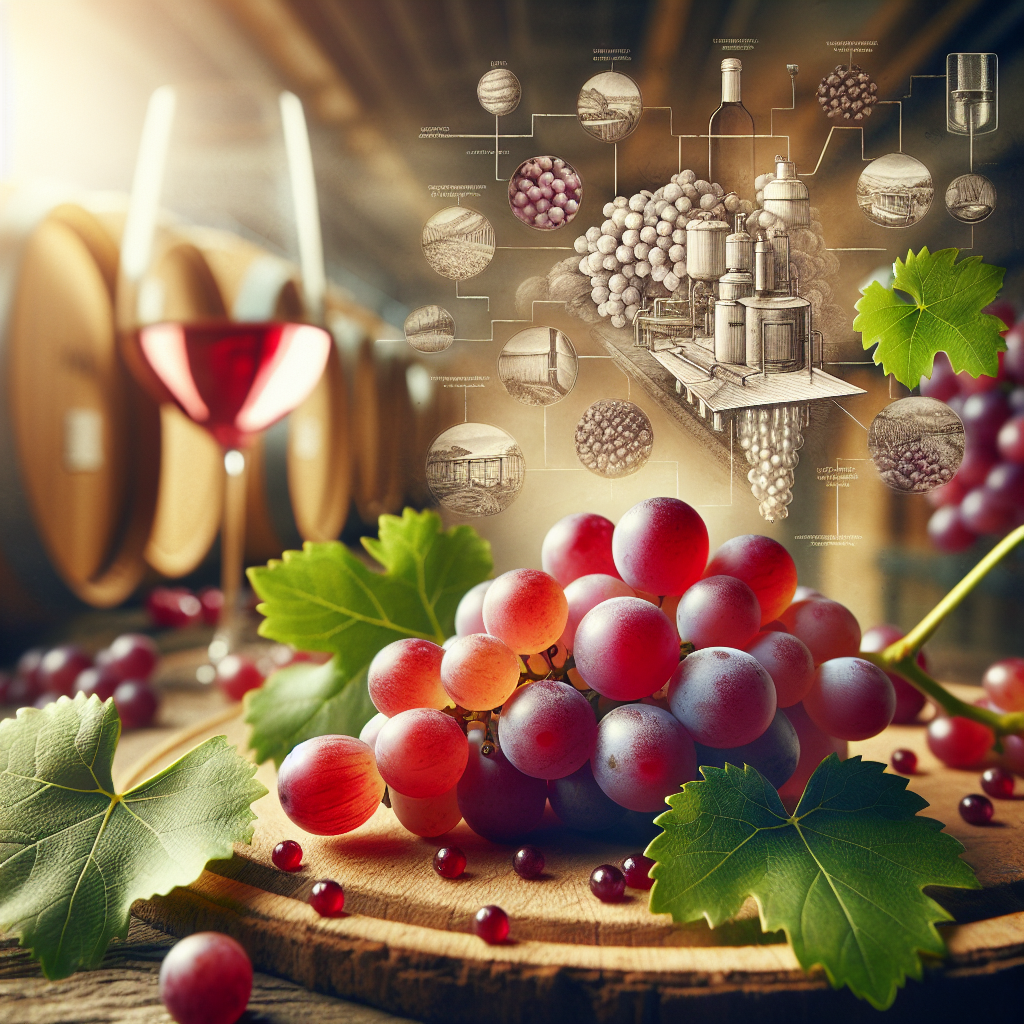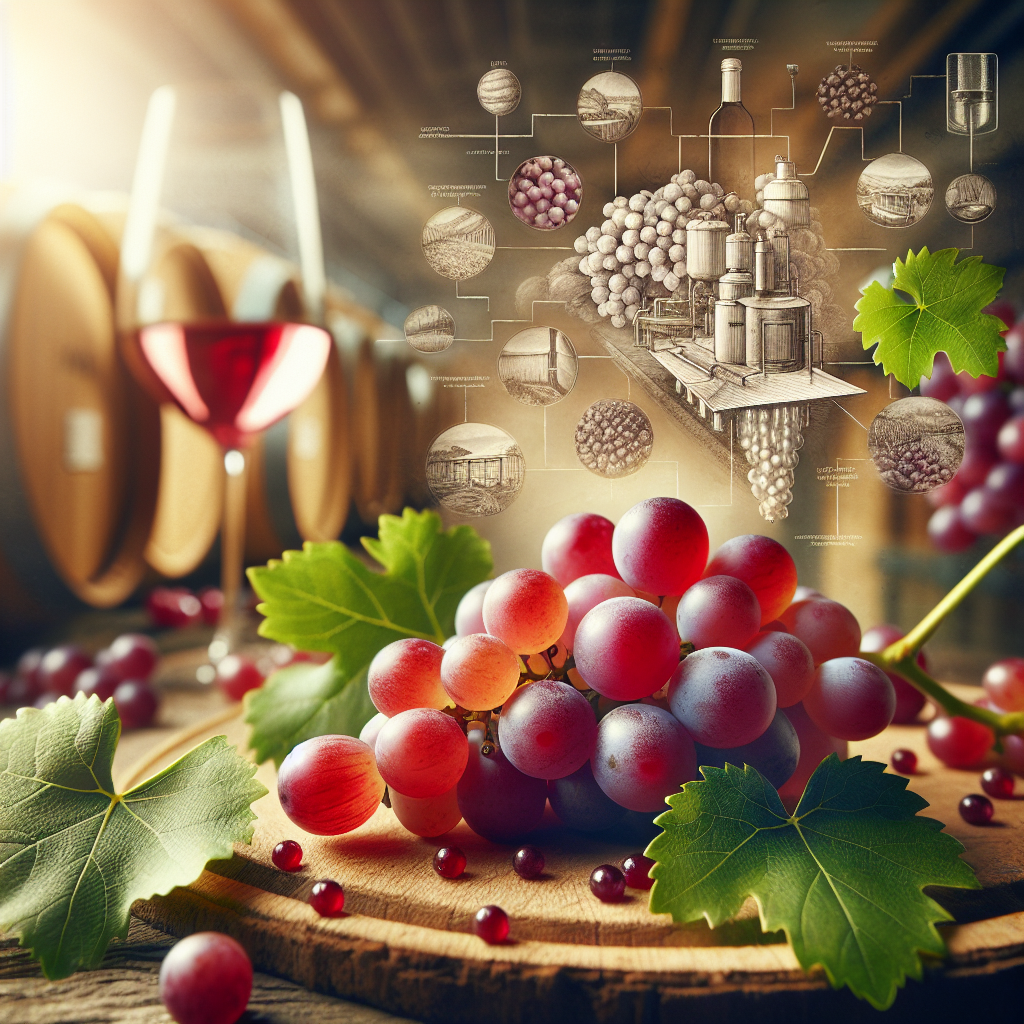Have you ever wondered about the secrets behind the glass of wine in your hand? Whether you prefer a bold red or a crisp white, there’s more to the process of winemaking than meets the eye. In this article, we will explore the key differences between the red and white winemaking processes, uncovering the distinctive techniques and ingredients employed to create these beloved beverages. So, grab a glass and join us on an enlightening journey through the world of winemaking.

Red Winemaking Process
Grape Selection and Harvesting
In the red winemaking process, the first step is selecting the right grapes for the desired flavor profile. You want to choose grapes with high sugar content and balanced acidity. The timing of the harvest is also crucial, as it affects the ripeness and flavor development of the grapes. Once the grapes are carefully handpicked or mechanically harvested, they are ready for the next stage of the process.
Destemming and Crushing
After the grape selection and harvesting, the next step is destemming and crushing the grapes. In red winemaking, the grape clusters are gently destemmed to separate the grapes from the stems. This is important because stems can add unwanted flavors to the wine. Once destemmed, the grapes are crushed to release the juice and pulp. This step helps break down the grape skins, allowing for better color extraction during fermentation.
Fermentation
Fermentation is a crucial step in red winemaking. Once the grapes are crushed, they are transferred to fermentation vessels, which can be large tanks or smaller barrels. During fermentation, natural yeasts or selected strains of yeast convert the sugars in the grape juice into alcohol. The fermentation process can take anywhere from a few days to a couple of weeks, depending on the desired style and taste of the wine.
Maceration
Maceration is a unique step in the red winemaking process that is not typically found in white winemaking. It is the process of letting the grape juice ferment with the skins and other solid grape particles. This allows for the extraction of tannins, color compounds, and flavor compounds from the grape skins. The duration of maceration varies depending on the style of red wine being produced.
Pressing
After maceration, the red wine is ready to be pressed. Pressing involves separating the juice from the solids, including grape skins, seeds, and stems. The juice that is extracted from pressing is known as free-run juice and is considered to be of the highest quality. The remaining solids are often pressed further to extract additional juice, known as press wine. These two juice fractions are often blended later in the winemaking process to achieve the desired flavor and structure in the final wine.
Malolactic Fermentation
Malolactic fermentation (MLF) is an optional but often preferred step in red winemaking. It is the process where malic acid, naturally present in grapes, is converted into lactic acid by bacteria. This fermentation can help soften the acidity of the wine and add complexity to the flavors. MLF is more commonly observed in red wines due to their higher tannin levels and can occur during or after the primary fermentation.
Aging
Aging is an essential part of red winemaking, as it allows the wine to develop complexity and desirable characteristics over time. Red wines are often aged in oak barrels or stainless steel tanks, depending on the winemaker’s preference. During aging, the wine undergoes chemical changes, such as tannin polymerization and gradual oxidation, which contribute to the wine’s texture, flavor, and aroma. The duration of aging varies depending on the style of the wine, with some red wines requiring several years of aging in the bottle before they are deemed ready for consumption.
Clarification and Filtration
Before bottling, red wines undergo clarification and filtration to remove any remaining solids or sediment. This process helps clarify the wine, making it visually appealing and removing any potential off-flavors or aromas. Various techniques, such as fining agents and filtration methods, are employed to achieve clarity without compromising the wine’s quality and characteristics.
Bottling and Aging
Once the red wine has been clarified and filtered, it is ready for bottling. Red wines are typically bottled in glass bottles with corks or alternative closures, such as screw caps or synthetic corks. After bottling, some red wines may continue to age in the bottle, allowing them to further develop and mature. However, it is important to note that not all red wines require extensive aging, and some can be enjoyed immediately after bottling.

White Winemaking Process
Grape Selection and Harvesting
Similar to red winemaking, the white winemaking process starts with selecting the right grapes for the desired wine style. However, for white wines, the focus is often on grapes with high acidity and fresh, fruity flavors. White wine grapes are typically harvested earlier than red wine grapes to retain their natural acidity and vibrant aromas.
Destemming and Crushing
Once the white grapes are harvested, they undergo a similar destemming and crushing process as red grapes. The main difference lies in the fact that white wines are made without the skins, so the grapes are gently destemmed and immediately crushed to avoid any skin contact. This approach helps preserve the delicate flavors and prevents excessive color extraction from the skins.
Fermentation
After crushing, the white grape juice is transferred to fermentation vessels, which can range from stainless steel tanks to oak barrels. The fermentation process for white wines is similar to that of red wines in terms of converting sugars into alcohol. However, white wine fermentation is typically cooler and slower to help preserve the fresh fruit flavors and delicate aromas.
Filtration
Unlike red wines, white wines usually undergo filtration earlier in the winemaking process. Filtration helps remove any impurities, sediments, or excess yeast cells that could affect the stability and clarity of the wine. This step is crucial to achieve the desired brightness and crispness associated with white wines.
Clarification
White wines often undergo an additional clarification step to further improve their visual clarity and remove any residual sediment. Techniques such as fining agents and centrifugation may be employed to achieve the desired level of clarity without compromising the wine’s flavor and aroma characteristics.
Aging
Similar to red wines, white wines can also benefit from aging. However, the aging process for white wines is generally shorter compared to red wines. Aging can take place in stainless steel tanks, oak barrels, or a combination of both. This allows the wine to develop complexity, enhance flavors, and gain subtle oak characteristics, depending on the winemaker’s preferences.
Blending
Blending is a common practice in white winemaking, where wines from different grape varieties or vineyard blocks are combined to create a harmonious and balanced final product. Blending provides winemakers with the opportunity to create a unique flavor profile by combining the strengths and characteristics of different grapes.
Stabilization
Stabilization is a crucial step in white winemaking to ensure the wine remains stable and retains its desired characteristics. The stabilization process involves reducing or eliminating elements that may cause the wine to become hazy or develop off-flavors. Cold stabilization and protein stabilization are common techniques used to achieve stability in white wines.
Bottling and Aging
Once the white wine has gone through clarification, filtration, and stabilization, it is ready for bottling. White wines are typically bottled in glass bottles with closures suitable for preserving their freshness and flavor. Like red wines, some white wines may continue to age in the bottle, allowing them to develop more complex flavors and aromas.
In conclusion, both red and white winemaking processes have their distinct steps and techniques. While red wines focus on maceration and extended aging, white wines emphasize freshness, clarity, and early bottling. By understanding the nuances of each process, you can appreciate the diversity and complexity of wines produced from different grape varieties and winemaking techniques. Cheers to the wonderful world of winemaking!
